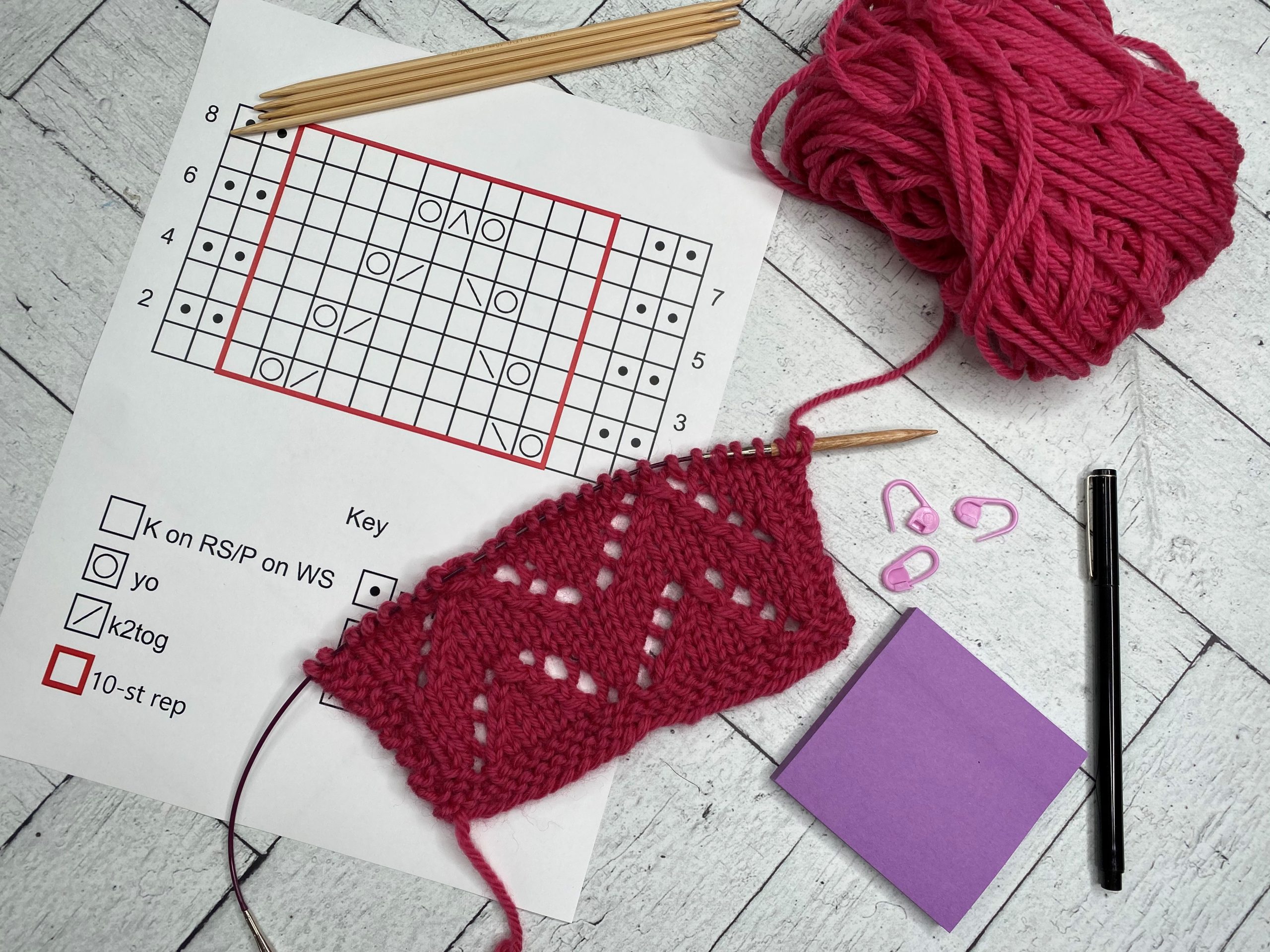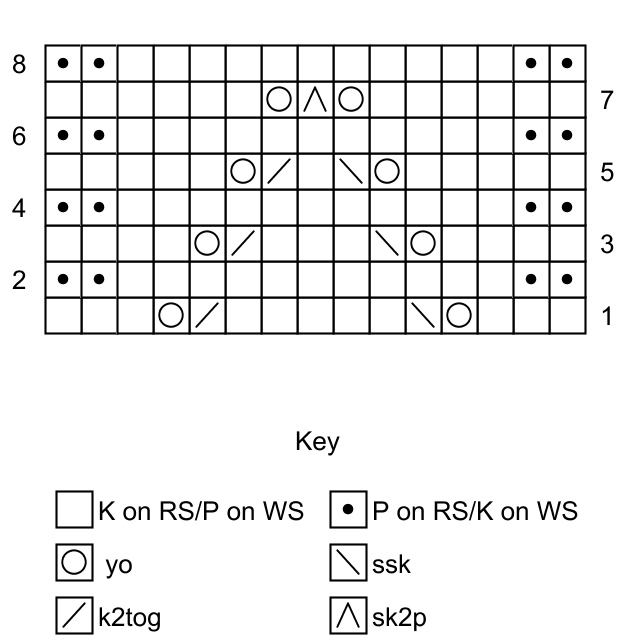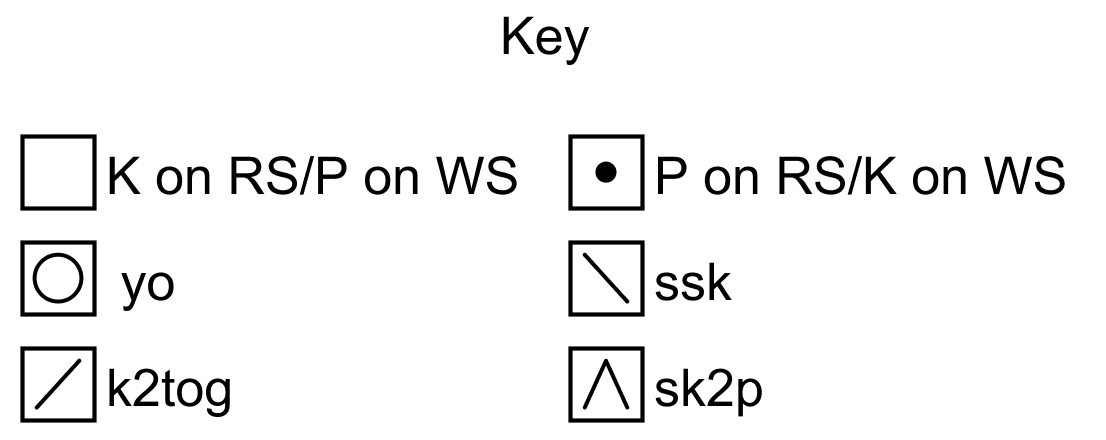 Knitting from a chart may seem like a daunting task. There’s a lot of information packed into these graphics and it can be confusing to figure out how and where to begin. With a little bit of patience and practice, most knitters find working from a chart easier than working from written instructions. By following the tips below, you’ll be well on your way to successfully working from a knitting chart.
Knitting from a chart may seem like a daunting task. There’s a lot of information packed into these graphics and it can be confusing to figure out how and where to begin. With a little bit of patience and practice, most knitters find working from a chart easier than working from written instructions. By following the tips below, you’ll be well on your way to successfully working from a knitting chart.
1. Look at the Numbers
 The numbers on the chart indicate where to start. Most charts are worked from the bottom up. In the chart above, you’ll notice Row 1 on the bottom right of the chart. The number being in this location means that this row is to be worked from right to left. Right Side rows are worked from right to left on knitting charts. Notice that Row 2 is located on the left side of the chart, which means that it is worked from left to right. This is a Wrong Side row.
The numbers on the chart indicate where to start. Most charts are worked from the bottom up. In the chart above, you’ll notice Row 1 on the bottom right of the chart. The number being in this location means that this row is to be worked from right to left. Right Side rows are worked from right to left on knitting charts. Notice that Row 2 is located on the left side of the chart, which means that it is worked from left to right. This is a Wrong Side row.

2. No Numbers? No Problem!
Occasionally a chart will have some rows missing altogether. This is commonly seen on large charts, where every other row or round is simply worked in knit stitches or purl stitches. The pattern instructions will indicate what stitches should be worked on those missing chart rows.3. Check Out the Key
Every chart will have a key or legend to tell you what each symbol means.
If the symbol has a different direction for the Right Side or Wrong Side of the work, the key will tell you how to work the stitch. For example, in the key above, the blank square represents a stitch that is knit on the Right Side and purled on the Wrong Side.
Abbreviations for the stitches are typically used in the chart key. Look at the Abbreviations section of your knitting pattern if you aren’t sure what something means.
4. Watch for Repeats
Stitch repeats in charts are often marked by a red box or bolded lines. In the chart below, a ten-stitch repeat is marked with a bold, red box.
For example, if you have 25 stitches on the needle (as seen in the first photo), you would work a Right Side (or odd-numbered row) by working the first 3 stitches, repeating the 10 stitches inside the red box 2 times, and completing the row with the final 2 stitches.
5. Keep Track of Your Progress
The most difficult part of the chart reading for many people is keeping track of your progress. There are lots of ways you can keep track of where you are in a chart. You can use a sticky note or highlighter tape to make sure you are working the correct row. It might also be useful to use a row counter or to mark your progress in a notebook, so you don’t lose your place. By following these simple tips, you’ll be working from a chart in no time.Related Video: Chart Reading Basics

It just occured to me hardware tape would make e great line/row marker. measure enough to cover the pattern and move it up as you go along. It won't get moved if you bump the pattern and you can easily read across the whole line.
Helpful
It will be very helpful
Helpful. Thanks.
Thank you this was very helpful
Looks interesting
I would be interested in a video on how to change a chart into a written pattern. I find following a pattern much easier.
I live in South Africa and very interested in knitting.
Very helpful. Will try this soon on something simple.
I found these instructions very helpful to know there are some constants in the creation of charts, but I, too, usually avoid patterns that are chart only.